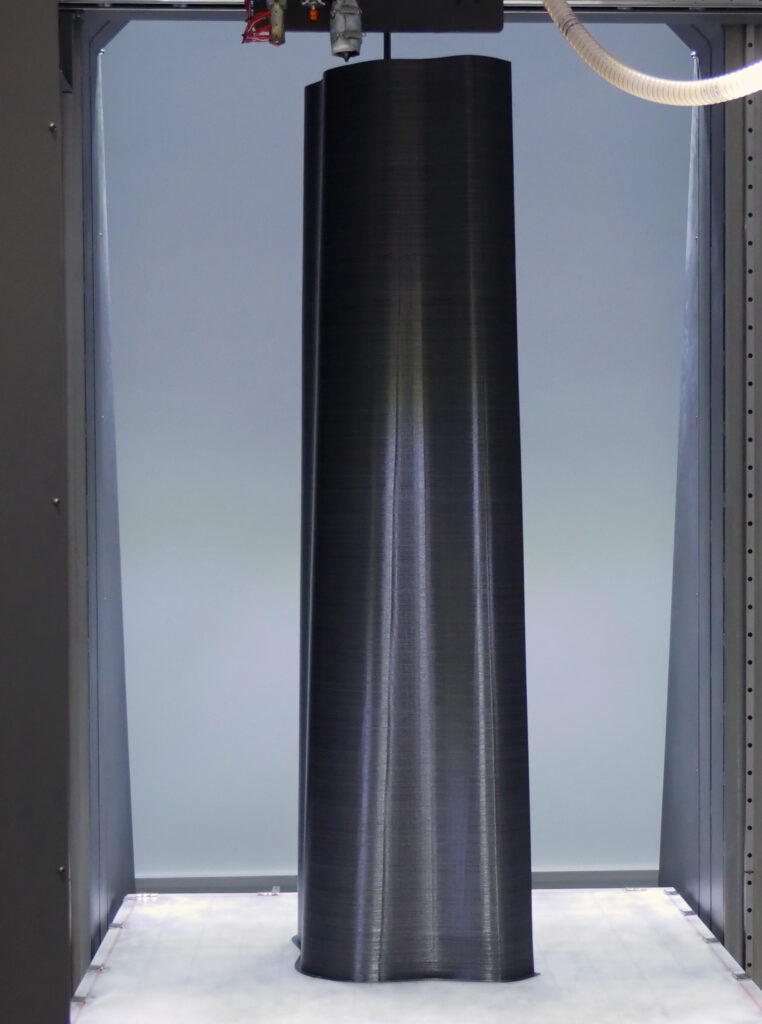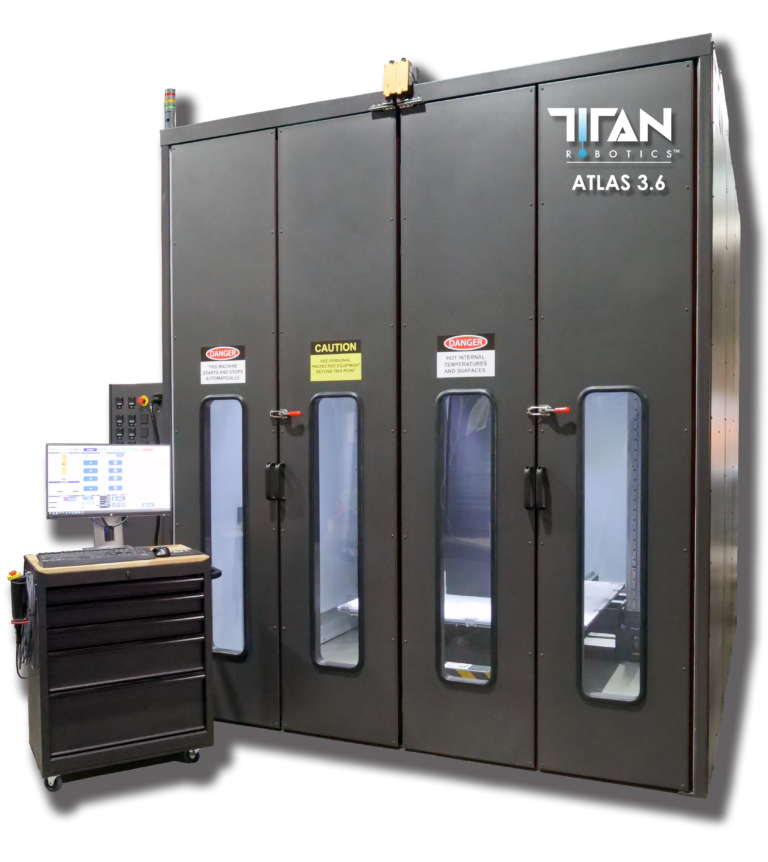3D printer manufacturer and service provider Titan Robotics has launched its largest pellet extrusion 3D printing system to date, the Atlas 3.6, at this year’s Formnext Connect.
Compatible with Titan’s Dual Pellet Extrusion and Hybrid Pellet + Filament Extrusion systems, the Atlas 3.6 features a build volume of 50″x50″x72″ and is capable of printing parts up to 6ft in height. According to the firm, the Atlas 3.6 is one of the largest machines of its kind currently on the market.
“When several of Titan’s industrial customers began requesting larger custom Atlas machine to meet their production needs, Titan began innovating to provide a robust solution to meet that need,” said Titan Robotics Partner, Rahul Kasat.
“With this large build size, customers can now print large parts as is without worrying about slicing it in multiple sections for printing and trying to assemble it post-printing.”

Atlas pellet extrusion
The Atlas 3.6 is the latest addition to Titan’s Atlas line of industrial 3D printers, which utilize pellet extrusion technology to print directly with pellets instead of traditional filament. According to Titan, this technology increases throughput while reducing materials costs – up to 10 times compared to traditional 3D printing filaments – and also expands the range of materials that can be 3D printed.
Titan introduced its new pellet extrusion technology at RAPID + TCT 2018 in a bid to take its large format 3D printing operations to the next level. Titan’s flagship system is the large-scale Atlas 3D printer, available in three different sizes up to 1066 mm x 1066 mm x 1219 mm (The Atlas 2.5). The company also previously built the 5 print-head Cronus 3D printer, integrated with Autodesk Project Escher technology. At RAPID + TCT 2019, Titan launched its Atlas-H dual extrusion system designed for high speed and low cost 3D printing, utilizing pellet extrusion technology.
Most recently, Titan partnered with Brazilian petrochemical company Braskem to launch a new polypropylene (PP) resin. The pellet-based polymer was the first commercially-available PP to be developed specifically for Titan’s Atlas line.

The Atlas 3.6
Built with a heavy-duty, rigid design, the Atlas 3.6 maintains the accuracy and rapid travel speeds of its predecessors while enabling the printing of larger format tooling, patterns and molds, and functional part applications.
The machine has an actively heated chamber able to reach 80 degrees celsius and facilitates several extrusion configurations, including Single Pellet, Dual Pellet, Hybrid Dual Pellet + Filament, and Hybrid Single Pellet + Filament options. The printer also features door safety interlocks and a closed-loop industrial CNC control system. Using the Atlas 3.6, high performance materials such as CF-PEI, GF-PEKK, ABS, and nylons can be utilized to print large parts suited to a wide range of applications.
“With our team of engineers, manufacturing experts and our extensive experience in providing additive manufacturing solutions, the development of the Atlas 3.6 further enables printing large parts at lower cost reliably using large-format industrial 3D printing,” added Kasat.
The Atlas 3.6 is immediately commercially available, and is currently utilized by Titan’s customers within the aerospace, defense, and consumer appliances sectors among others.
Subscribe to the 3D Printing Industry newsletter for the latest news in additive manufacturing. You can also stay connected by following us on Twitter and liking us on Facebook.
Be sure to subscribe to the Another Dimension podcast on your chosen podcast player to make sure you never miss an episode.
Looking for a career in additive manufacturing? Visit 3D Printing Jobs for a selection of roles in the industry.
Featured image shows the Atlas 3.6 pellet extrusion 3D printing system. Image via Titan Robotics.



